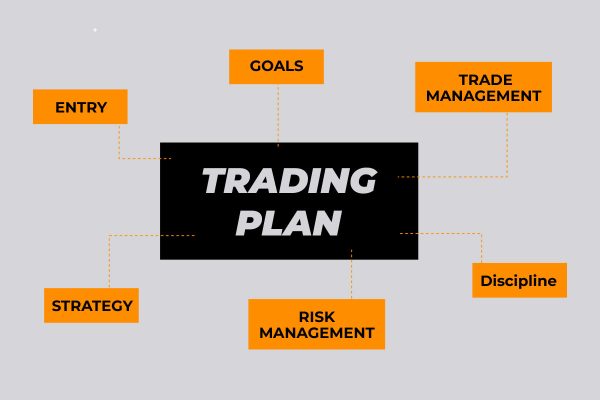Price action trading is a well-known type of technical analysis, implemented by many traders in their trading strategies. Price action patterns are often used to identify potential support and resistance levels, as well as trend direction.
They also can help individuals identify entry and exit points for a particular trade, allowing traders to maximize their profits and minimize their risk.
Price action patterns provide traders the opportunity to make informed decisions and anticipate price directions when it comes to trading financial instruments.
This article will explore the most common price action patterns and how they can be used to improve trading strategies. Let’s save time and begin our journey!
What are Price Action Patterns?
Price action patterns are graphical patterns that appear repeatedly in the market and can be identified on any assets’ price chart. Market participants’ buying and selling behavior(the supply and demand dynamics) results in the formation of these patterns.
Price action traders believe that the price represents the whole sentiment of the market. Accordingly, they use price action to anticipate future price movements.
Price action patterns consist of two general types, such as
- Continuation patterns: These patterns typically occur in the middle of a trend allowing the market to take a rest before continuing the trend. Continuation patterns suggest that the market will potentially continue in the same direction.
- Reversal patterns: These patterns typically occur when the market tends to change its direction. Reversal patterns point that the market is likely to reverse and move in the opposite direction.
As of now, we’ve learned about price action patterns and the two general categories. Now, let’s explore the most helpful patterns and the way a trader can use them.
Support and Resistance levels
Price action traders use support and resistance levels, two basic concepts in technical analysis, to spot possible buying and selling opportunities in the financial markets.
A price level known as support is where the market has seen buying pressure in the past, preventing the price from dropping any lower. It is the price at which an asset’s demand is sufficiently strong to overcome selling pressure and support the price.

Typically, participants believe that when the price faces a support level, it will recover, and the buying pressure will push it up. As a result, a support level potentially provides a buying opportunity.
Trend Lines
A trend line is one of the most helpful tools used by price action traders to determine a price trend’s direction. By connecting two or more price pivots on a chart, often the highs or lows of a trend, trend lines are created.
These lines can be used to determine both potential levels of support and resistance as well as the general trend’s direction.

Drawing a trendline connecting the higher lows of a trend will demonstrate an uptrend, which is illustrated by a series of higher highs and higher lows. However, drawing a trendline linking the lower highs will show a downtrend, which is described by a sequence of lower highs and lower lows.
Depending on whether a trendline is above or below the current market price, traders can use it to determine possible support or resistance levels.
They are basic yet helpful tools for determining the general trend’s direction. They may be combined with other technical analysis techniques to define potential entry and exit trade points.
Additionally, it’s important to remember that trend lines must be updated frequently to reflect new price actions and trend changes.
Chart Patterns
Price action chart patterns are well-known particular setups that appear in the price action of an asset over time. By identifying and using these patterns, traders can find potential trend reversals or continuations and enter trading positions.
It is important to note that while these patterns are helpful tools for traders to find potential trading setups, they are not definite, and false signals can occur at any time. Hence, it is better to have a risk management strategy and always consider different scenarios for the upcoming price action.
The following section will study the most well-known price action chart patterns. Let’s scroll!
Double Top and Double Bottom Patterns
This pattern occurs when the price of an asset hits a level of resistance or support twice, forming a “W” or “M” shape on the chart. Traders believe that the formation of these patterns increases the likelihood of a trend reversal.

The neckline of a double-top pattern is formed by drawing a horizontal line at the low between the two peaks, while the neckline of a double-bottom pattern is formed by drawing a horizontal line at the high between the two bottoms.
The neckline is a critical level to keep an eye on since it frequently serves as a level of support or resistance for the asset’s price.
In a double-top pattern, the asset’s price breaking below the neckline is frequently seen as a sign of a probable trend reversal and a signal for traders to enter a short position.
In contrast, if the asset’s price surpasses the neckline in a double-bottom pattern, it is frequently seen as a sign of a potential trend reversal and a signal for traders to enter a long position.
Nevertheless, the reversal will be confirmed when the price surpasses the neckline.
Head and Shoulders
A head and shoulders is another price action chart pattern traders use to identify market reversal points. The pattern’s name is due to its similarity to a head with two shoulders on either side.

It typically forms along an upward price trend and has three peaks, with the head (the center peak) being the tallest and the shoulders (the two other peaks) being around the same height.
The neckline is formed by drawing a trendline between the lows of the left and right shoulders. When the asset’s price declines below the neckline, it is commonly seen as a sign of a possible trend reversal and a trigger for traders to enter a short position.
Typically, the distance between the top of the head and the neckline is measured, and then that length is extended downward from the neckline to set the pricing target for the pattern.
Flag Patterns
Unlike the previous reversal patterns, a flag is a continuation chart pattern that appears during a trend. As said, the flag represents a period of continuation consolidation, while the price rally before the flag demonstrates the initial trend.

A flag pattern occurs in both bullish and bearish trends. A bullish flag is a descending price channel, while a bearish flag is an ascending one. Nevertheless, the pattern will only be confirmed if the price breaks out of the channel in the initial trend’s direction.
Depending on the initial trend’s direction, flags can confirm whether the trend will continue. For instance, if a bullish flag forms during an upward trend and the price surpasses the flag’s upper trendline, the trend will likely continue.
Furthermore, the flag’s target can be identified by measuring the length of the initial trend and projecting it to the price after breaking the upper trendline.
Wedge Patterns
A wedge pattern forms on the chart when an asset’s price moves in a narrowing range. Simply put, it is like a triangle with one end that is wider and the other end that gradually gets narrower.
The rising wedge and the falling wedge are the two main types of wedge patterns.

A rising wedge is a well-known bearish price action pattern. It forms when the price of an asset develops higher highs and higher lows within a narrowing range.
This pattern suggests that the bears dominate the bulls and that the buying pressure is weakened. The pattern’s confirmation depends on the price dropping below the wedge’s lower trendline, delivering an opportunity for traders to go short.
In contrast, the falling wedge pattern forms when the price makes lower highs and lower lows inside a narrowing range. This pattern indicates a weakened selling pressure and the dominance of the bulls.
Triangle Patterns
A triangle pattern occurs when the price of an asset fluctuates in a narrowing range, forming a triangle shape. They typically occur when the market enters a correction stage.
Triangle patterns include three types; symmetrical, ascending, and descending triangles.

When the price of an asset develops lower highs and higher lows inside a tightening range, a symmetrical triangle forms.
This pattern indicates an uncertainty between both buyers and sellers of the asset. A breakout validates the pattern, and traders can decide whether to go long or short based on the breakout’s direction.
An ascending triangle can be identified by a series of higher lows forming within a narrowing range with a horizontal resistance level. This pattern indicates the buyers’ dominance, and a breakout from the resistance level confirms the pattern. Accordingly, it provides traders with the opportunity of taking a long position.
A descending triangle occurs when a series of lower highs form within a narrowing range with a horizontal support level. The pattern shows that the market bears are in control, and a breakout from the support level confirms the idea.
Accordingly, it provides traders with the opportunity of taking a short position.
Candlestick Patterns
Traders use candlestick patterns to anticipate potential market reversals or trend continuations based on how the price movement forms on the charts.
The patterns’ names are derived from the structure and shape of the individual candles on a price chart.

The most famous candlestick patterns include the following.
- Doji – a candle with a small body and long wicks, indicating an equilibrium between the market bulls and bears. A doji candlestick pattern suggests that there is uncertainty about the security’s future price and that no clear direction can be anticipated.
- Hammer – a bullish reversal pattern with a long lower wick and a small body.
- Shooting star – a bearish reversal pattern with a long upper wick and a small body.
- Engulfing – a pattern in which a larger candle “engulfs” the previous candle, indicating a potential reversal in the trend.
- Morning star – a bullish reversal pattern consisting of three candles, with a large bearish candle followed by a small candle and then a large bullish candle.
- Evening star – a bearish reversal pattern including three candles, with a big bullish candle followed by a small one and then a large bearish candle.
How Can Traders Use Price Action Patterns?
Price action patterns can help traders in improving their trading strategy in a number of ways, as the following
- Identifying entry and exit points: Price action patterns can aid traders in finding entry and exit points for their trades or managing an open position. For example, a trader can use a resistance trendline as an entry-level to go short on a specific asset.
- Confirming signals: Traders can use price action patterns as a confirmation for their trades or adjust their entry or exit points for greater profits. For instance, by identifying a bullish flag pattern, a trader can confirm a buy signal and enter a long position.
- Setting stop-loss levels: Price action patterns can be a useful tool for traders to find the best levels for setting stop-loss and have better risk management. For example, after entering a long position, the trader might find a support level and set their stop loss below it in case the level holds the price. By this method, the trader limits further losses if the market moves in the opposite direction.
- Managing risk: Traders can use price action patterns to control their risk. For example, a trader might identify a reversal pattern as a sign to exit a trade in case the market moves against their position.
The Bottom Line
Traders who use technical analysis in their trading strategy might benefit from price action patterns. By using these patterns and examining price movements on a chart, they can anticipate future price fluctuations reflecting the market’s general sentiment.
Price action patterns can provide traders with insightful information about the market and aid in the development of their trading strategies.



